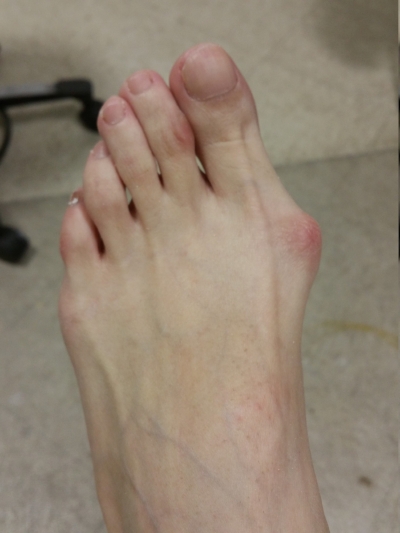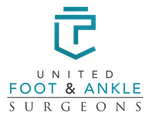MINIMALLY INVASIVE SURGERY FOR BUNION

Painful Bunion before surgery

After minimally invasive bunion surgery
Dr. T.J. Ahn does a minimally invasive ambulatory surgical technique to correct bunions. It involves making a small incision less than 3 mm to remove the bony exostosis or bump located along the side of the foot. He then makes another small incision on the top of the big toe to bring it into proper alignment or position. The small surgical incisions enable the surgeon to use fine specially designed instruments to obtain the best cosmetic result.
Sometimes additional procedures may be required such as correcting a second hammertoe or low metatarsal bones often seen in conjunction with bunions. These procedures are also done with the minimally invasive incision surgery and the doctor would be able to determine if this is needed during your foot exam, which would involve x-rays unless you have had some recently taken.
Surgery is performed under Fluoroscopic viewing. There is generally less trauma to the tissue and surgical times are lessened with this technique, reducing pain and recovery time. Less suturing is necessary and often times no sutures are used. Postoperative patients ambulate immediately and are often placed in a surgical shoe or boot to aid ambulation.
MIS surgeons are able to rely on a compression dressing for stabilization immediately after surgery, eliminating the need for pins or screws enabling immediate ambulation. Most of the time it is unnecessary to fuse the toe joints.
Getting back into regular type shoes depends on rate of healing and amount of swelling, which is very individual. You will have a bulky dressing the first week. Dr. Ahn usually likes to see you back at the clinic after two to three days for redress, if physicality allows, or 5 days after surgery for our out-of-town patients. In one week your dressing is changed to band-aids or bandage strips, a spongy material toe separator and disposable ace bandage type wrap which you yourself change daily. This dressing is worn three to four weeks. No dressing is usually required after this.
